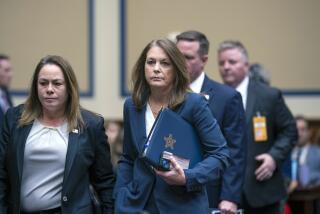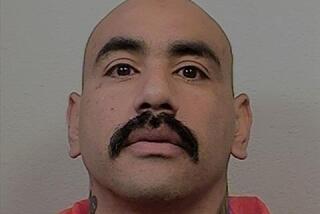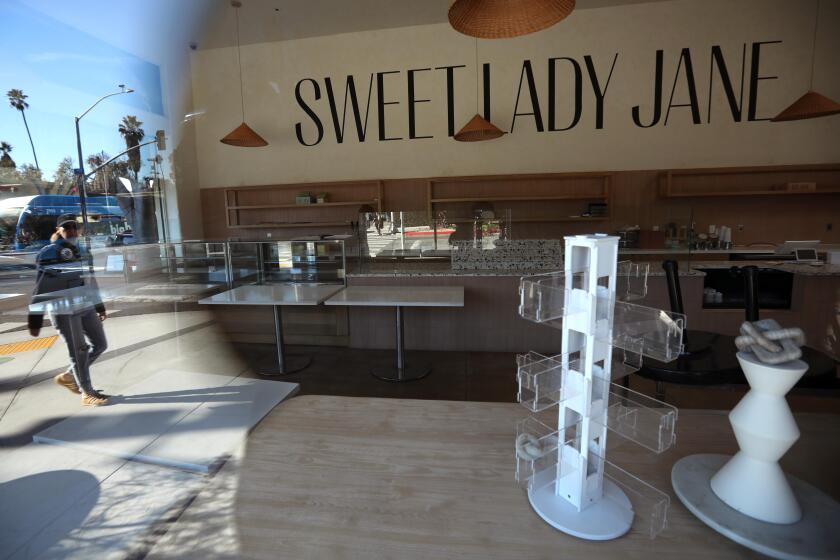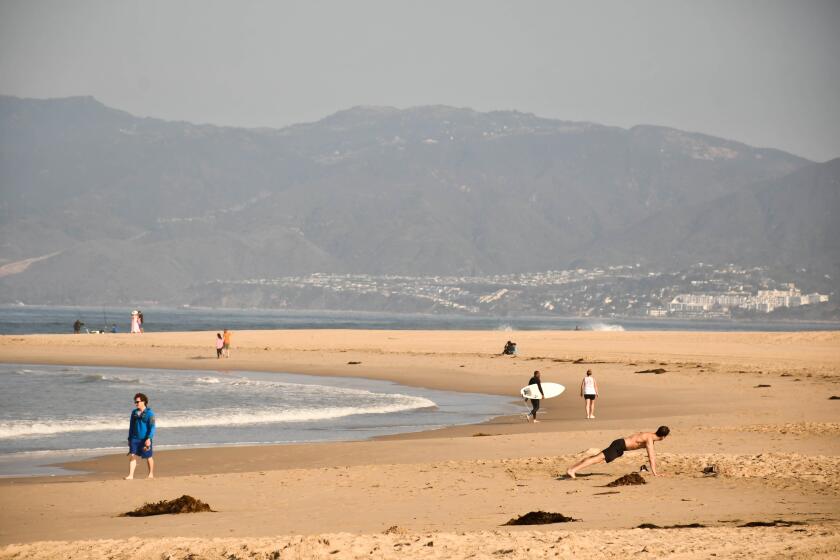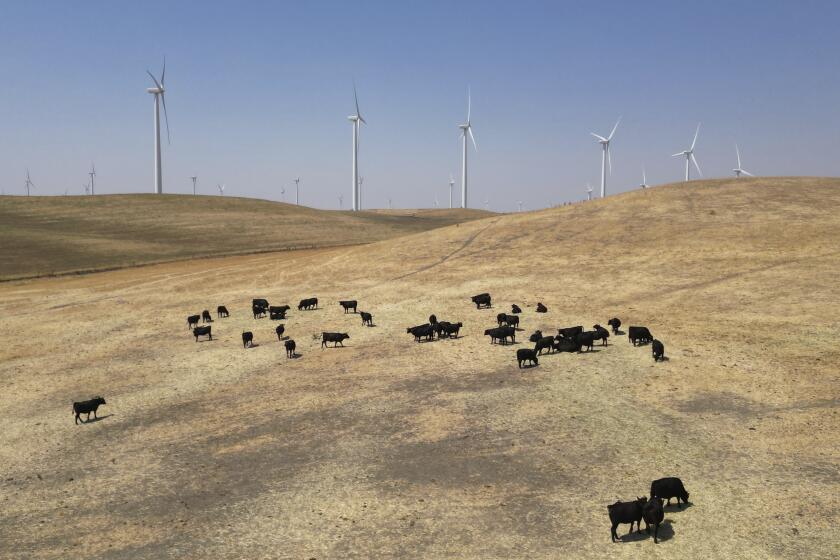20 Years Later, Latinos Will March Again : Demonstration: Chicano empowerment was the message in 1970. Organizers say not much has changed in two decades.
“The Mexican-American has the lowest educational level, below either black or Anglo, the highest drop-out rate, and the highest illiteracy rate.” --Ruben Salazar in his last Times column on Aug. 28, 1970
According to many Chicano activists, what Ruben Salazar wrote 20 years ago is still true today.
“He was right then,” said Rodolfo Acuna, a Chicano studies professor at Cal State Northridge. “We’re worse off today than we were then.”
The lack of advancement for Latinos in politics, socioeconomic power and in education--all subject to sometimes bitter comment in Salazar’s columns in The Times--will be the major themes of a 3 1/2-mile protest march Saturday that will commemorate the 20th anniversary of an anti-Vietnam War demonstration in East Los Angeles that many activists say was the largest political gathering of people of Mexican descent in U.S. history.
Up to 10,000 people are expected to take part Saturday, according to members of the National Chicano Moratorium Committee, a group that is organizing the event.
On Aug. 29, 1970, about 20,000 people marched through the Eastside’s major business districts to protest the disproportionate numbers of Chicano casualties in Vietnam and the poor opportunities Chicanos were afforded in this country. The procession turned violent.
There are conflicting versions of who provoked the violence, but in it, three people were killed, more than 200 were arrested, 60 others were injured and $1 million worth of property was damaged in looting and rioting along Whittier Boulevard.
Among those killed was Salazar, then 42, who was covering the protest in his capacity as a Times columnist and news director of Spanish-language Los Angeles television station KMEX.
Salazar, who also had been a reporter for The Times for 11 years, was sitting in a Whittier Boulevard bar when a tear-gas projectile fired by a Los Angeles County sheriff’s deputy struck his head, killing him instantly.
His death and the issues raised on that smoggy Saturday afternoon prompted the creation of several special-interest groups of educators, lawyers, engineers, politicians and other professionals to lobby on behalf of Latinos. Among the groups founded was the California Chicano News Media Assn., a group of Los Angeles journalists who believed that more Latinos like Salazar should take up journalism as a career.
As a result, organizers of Saturday’s march--which will follow the same route as the one 20 years ago--said it will focus on many of the same issues raised back in 1970.
“Ruben’s death is an important element, but it’s not the only one,” said march chairman Carlos Montes, an Eastside activist. “We want to support the struggle of the farm workers, fight against the (proposed) incinerator in Vernon, protect Olvera Street.”
Arnulfo Casillas, a member of the Los Angeles chapter of the National Chicano Moratorium Committee, added:
“Twenty years ago, they had had the student walkouts in East L.A. We still have the big (high school) dropout rates of 50%. The only different is, we’re not as naive as we were then. We have 20 years of experience and maturity.”
Some prominent Chicano activists, who have been vocal on Latino issues since the 1960s, are scheduled to speak at pre-march activities at Belvedere Park or at a post-march gathering at Salazar Park, formerly known as Laguna and renamed in honor of the slain newsman.
Those expected to speak include Acuna, Dolores Huerta of the United Farm Workers of America, Nita Gonzalez, the daughter of Denver activist Rodolfo (Corky) Gonzalez, Juana Gutierrez of the Mothers of East L.A., and David Sanchez, former leader of the Brown Berets.
Entertainers will include such groups as Culture Clash, Los Alacrances and Los Perros del Pueblo.
After two hours of pre-march activities, the march will begin at 11 a.m. at Belvedere Park’s Albert C. Diaz Plaza at the corner of 1st Street and Mednick Avenue. It will proceed south on Mednick to 3rd Street, where it will turn east to Atlantic Boulevard. Once on Atlantic, the marchers will head south to Whittier Boulevard and then west to Salazar Park.
Entertainment and speeches at Salazar Park are scheduled from 1:30 p.m. to 4 p.m., organizers said.
Some scars from the march two decades ago are still tender. For example, organizers said Salazar’s widow, Sally, was invited to participate Saturday, but she declined.
And sheriff’s deputies, who marchers claimed provoked the violence in 1970, plan to keep a relaxed but vigilant stance with this march.
“I’m confident that this will be a peaceful march,” said Capt. Ramon Sanchez, commander of the East Los Angeles sheriff’s station. “If an incident goes down, I’m prepared.”
PARADE ROUTE
The Chicano Moratorium March will begin at 11 a.m. Saturday at the Albert C. Diaz Plaza in Belvedere Park at the corner of 1st Street and Mednick Avenue in East Los Angeles. Pre-march activities, including some speeches and entertainment, are scheduled for 9 a.m. Sheriff’s deputies plan to close the streets on the route to traffic during the march. Post-march speeches and entertainment at Salazar Park are slated for 1:30 to 4 p.m.
More to Read
Sign up for Essential California
The most important California stories and recommendations in your inbox every morning.
You may occasionally receive promotional content from the Los Angeles Times.
